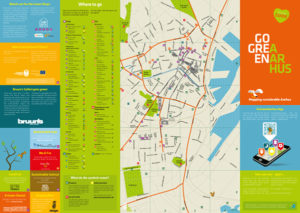One of the main challenges with promoting sustainability is the relative scarcity of real world examples. At least that is the perception. By confronting your students with someone else’s everyday reality, then it’s easier to convince your students that they should be adopting these practices too. So one big advantage of case studies is the demonstration effect.
The case study approach is a useful pedagogical tool that has been used very successfully over many years especially in business management. There is nothing inherently sustainable about the approach but we are finding it a very flexible and appropriate pedagogical tool in the Prof E Sus project. Prof E Sus is about how to help vocational teachers in guest-oriented fields promote sustainable work practices in food preparation, offering accommodation services and so on. A key finding is that sustainable work practices only become second nature if the appropriate mindset is in place. And when mindset is at the forefront, rather than work procedures, then case studies assume an added importance.
Pedagogy
Another strength of case studies is that they are usually used as group discussion prompts. Although it is feasible to use case studies for individual study, their strength lies usually in discussion of the issues in small groups. So the application of the case study approach lends itself to practicing at least one of the five key sustainability pillars, that of collaboration. From a pedagogical point of view, coming to a consensus through discussion is a powerful way of learning.
Real or realistic?
The project has produced a paper describing how we intend to use case studies and one of the guiding principles is that each case study should be real or realistic. A real case study based on actual people and organisations helps to demonstrate very powerfully what is possible. The students of our pilot course will be visiting a sustainably run hotel in Vienna for example. This will be a great opportunity to ask all those, ‘Yes but, how do you …..?’ questions. They will be hearing an interview with the owner of a sustainably run restaurant in Denmark who will challenge their perceptions of what waste is by talking about how they have used apple and potato peelings as the basis for dishes!
Realistic case studies are also useful by manipulating reality to get our participants talking about realistic potential situations. So for example, as far as I am aware, there is no existing FAQ for teachers new to Educating for Sustainable Development (ESD), but it is plausible that such an artifact should exist. So based on feedback from an early draft of the pilot course, we will be using the feedback questions as the basis for a fledgling ESD FAQ and asking our participants to provide more questions and, if possible, some answers as one of their tasks.
Note that case studies can take on a variety of forms. Already in these few paragraphs I have talked about a visit, a recorded interview and a FAQ document as potential case studies.
Promoting a sustainable mindset
So how to use a case study to promote a sustainable mindset? Obviously one could include elements of sustainability in the story itself. But in order to make the sustainability aspects more prominent then it is a good idea for the trainer using a case study for sustainability purposes to highlight both the field-specific and sustainability-specific aspects of the case as part of the lesson planning.
The example used in the Prof E Sus project paper is that of a German Hotel, Sengelmannshof in Essen that needs to replace its linen. On the one hand the case study can be drawn very narrowly asking students to research options and comparing prices and quality, the field-specific aspect, and on the other hand students can be asked to consider sustainability aspects such as recycling, repurposing or disposal of the old linen, taking a long-term perspective rather than a purely accounting one in terms of depreciation, responsible purchasing and so on. The two aspects are illustrated in an extract from the sample case study below.

100% sustainable
Sometimes the aims of the case study will align 100% on the sustainability column. An example of that might be the GoGreen city map produced by World Perfect for the city of Aarhus in Denmark. The map has been produced annually since 2011 and acts as a directory to sustainable businesses and services in the city under catgories such as food, restaurants, accommodation, cleaning supplies and so on. A project built around this would be aimed at sustainability from the start and would need minimal tweaking. Students could be asked to make a similar map for their own city. The project could be small or largescale. It could require students to contact the businesses to find out more about their sustainable credentials. And it could be used as the basis for purchasing decisions in practical work in the rest of the course.

Next step
How about taking a look at your next lesson? Could it be a case study? What new insights do you get by adding a column in which to insert sustainability aspects?

